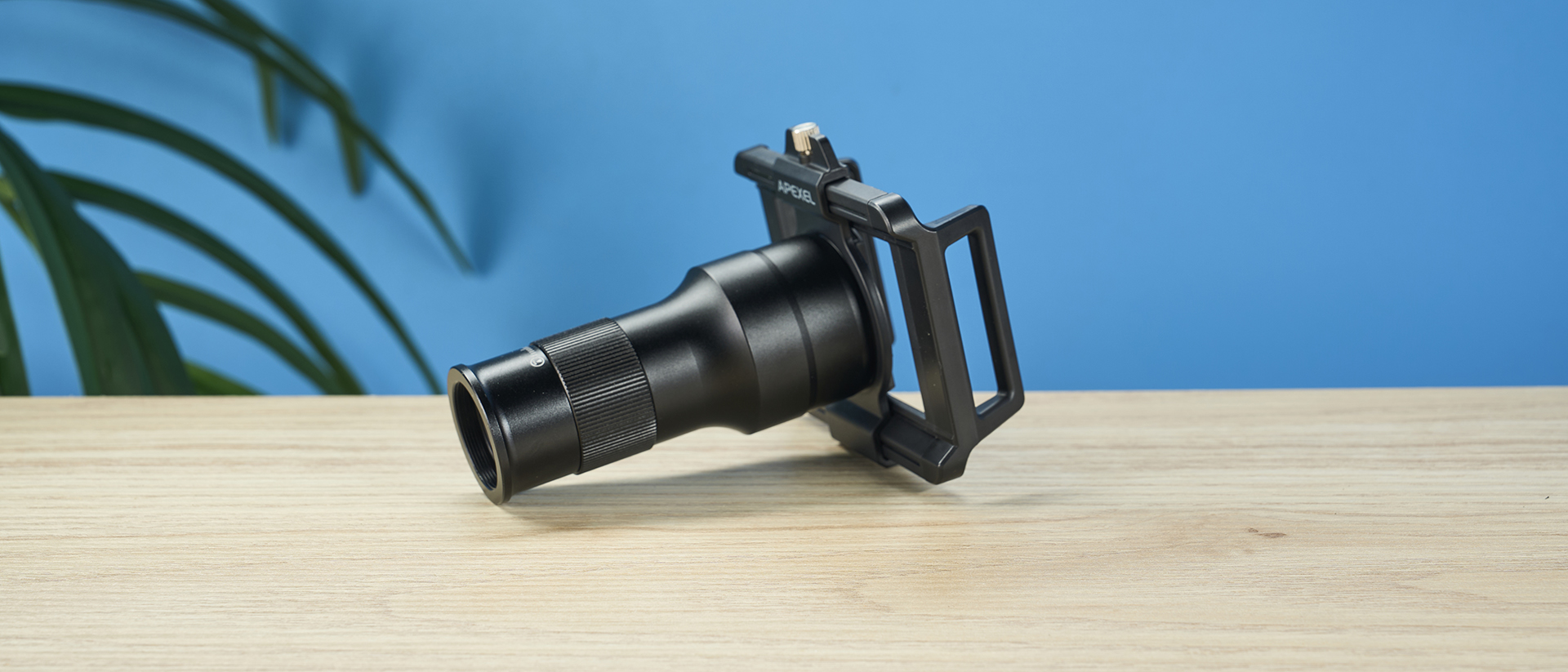Tom's Guide Verdict
Boasting premium construction and universal compatibility, the Apexel TM6 TeleMacro is a great two-in-one lens that delivers sharp images and lovely portraits. It’s very easy to use and it’s cheaper than Moment and Sandmarc phone lenses. However, it’s heavier than them, tele photos have significant chromatic aberration, and macro performance is hit-or-miss.
Pros
- +
Great build quality
- +
Superb telephoto performance
- +
Easy to mount
- +
Universal compatibility
- +
Inexpensive
Cons
- -
Prevalent chromatic aberration
- -
Macro performance is hit-or-miss
- -
Heavy
Why you can trust Tom's Guide
Smartphone photography has come a long way, and you don’t necessarily need the best mirrorless camera to capture stunning photos — especially if you’re on a tight budget. I take photos with my Google Pixel 7 Pro all the time. I even photographed the Northern Lights with it. But if you have an older phone and wish its performance was better, you need the best smartphone lenses, like the Apexel TM6 TeleMacro, to up your game.
The TM6 TeleMacro is a two-in-one telephoto and macro lens, so you can take fantastic shots from a distance and also close-up shots of macro subjects. The lens boasts premium construction, while universal compatibility means you can mount it on to any smartphone, with the included clip-on mount. While the telephoto lens delivers great images, the macro performance is hit-or-miss, and there’s significant chromatic aberration in some telephoto shots. The lens is also quite bulky. But it’s much cheaper than its competitors.
For the complete breakdown, read my full Apexel TM6 TeleMacro lens review.
Apexel TM6 TeleMacro lens review: Specs
| Specs | Apexel TM6 TeleMacro |
|---|---|
| Price | $59 / £48 |
| Mount weight | 1.2 ounces |
| Mount size | 3.4 x 3.1 x 1.2 inches |
| Telephoto lens weight | 4.7 ounces |
| Telephoto lens size | 3.7 x 1.3 inches |
| 150mm macro lens weight | 0.4 ounces |
| Magnification ratio | 6x |
| Focus distance | 15cm-∞ |
Apexel TM6 TeleMacro lens review: Cheat sheet
- What is it? A two-in-one telephoto and macro smartphone lens
- Who is it for? For people who want to take their smartphone photography to the next level
- How much does it cost? The Apexel TM6 TeleMacro lens is available for $59 / £48
- What do we like? The premium build quality, superb telephoto performance, universal compatibility, and that it’s cheap compared to competitors
- What don’t we like? It’s heavy, and macro performance is hit-or-miss
Apexel TM6 TeleMacro lens review: Price & availability
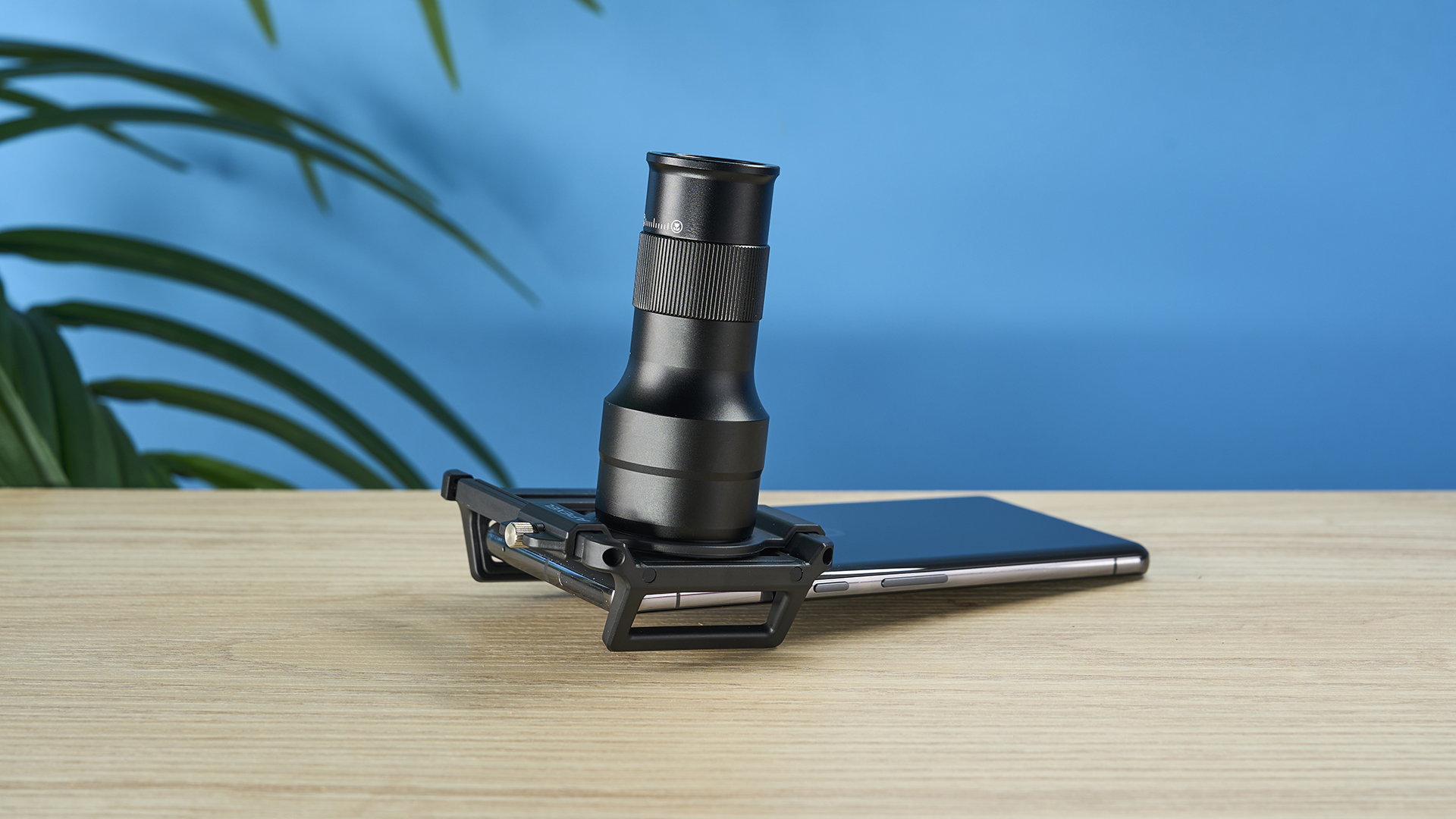
Launched in fall 2024, the Apexel TM6 TeleMacro lens has a retail price of $59 at Apexel U.S. / £48 at Apexel U.K. If you’re on a budget, this lens is perfect.
Compared to other smartphone lenses I’ve tested, the Apexel’s offering is very affordable. For context, the Moment Tele 58mm costs $150 while the Moment Macro 10x is available for $140. Similarly, the Sandmarc 58mm 2x Telephoto costs $129, and the Sandmarc 25mm Macro costs $99.
Apexel TM6 TeleMacro lens review: Design
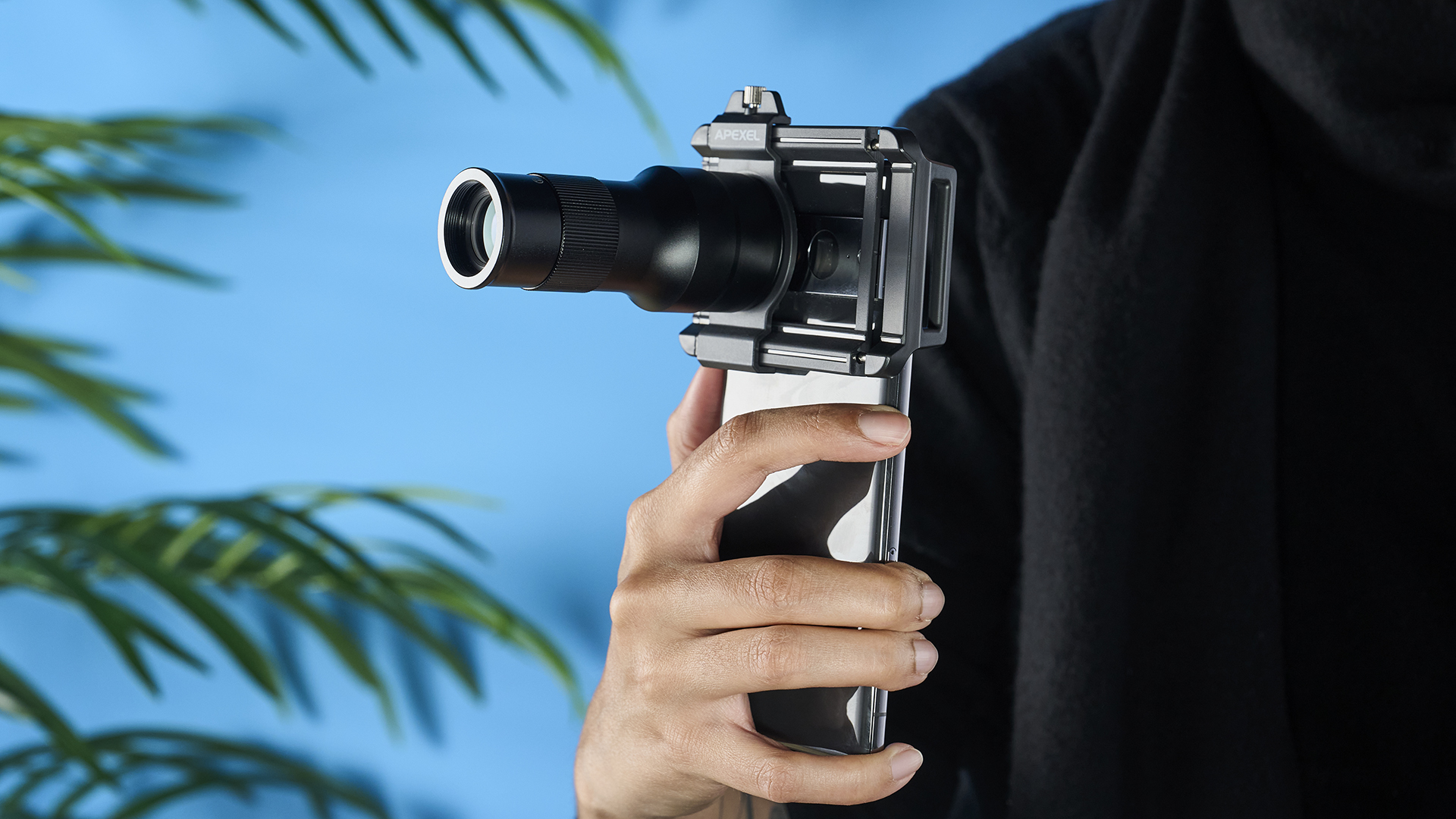
With a body made entirely of aluminum alloy, the Apexel TM6 TeleMacro lens is sturdy and feels premium. It doesn’t look as sleek as Moment lenses, though, and is sure to draw eyeballs to your phone when you’re using it: it measures 3.7 x 1.3 inches so it really protrudes outwards, like an actual telephoto lens for one of the best mirrorless cameras.
The good news is that you don’t need a dedicated phone case to mount the lens. The TM6 TeleMacro lens comes with a universal phone mount made of hard plastic. I had no problem sliding it on to and using it with my Google Pixel 7 Pro as it stayed in place, even when I was turning the focus wheel. That’s thanks to the secure screw that can be tightened as needed. Mounting the lens onto your phone is simple too, as all you need to do is screw it in. Moment, Sandmarc and ShiftCam all offer cases for mounting, which provide stable and correct alignment. However, these will cost you extra (Moment’s cases cost upwards of $50), and Moment’s case mounting system risks scratching your camera lens — the Apexel’s mounting is simpler, cheaper, but could be more prone to misalignment.
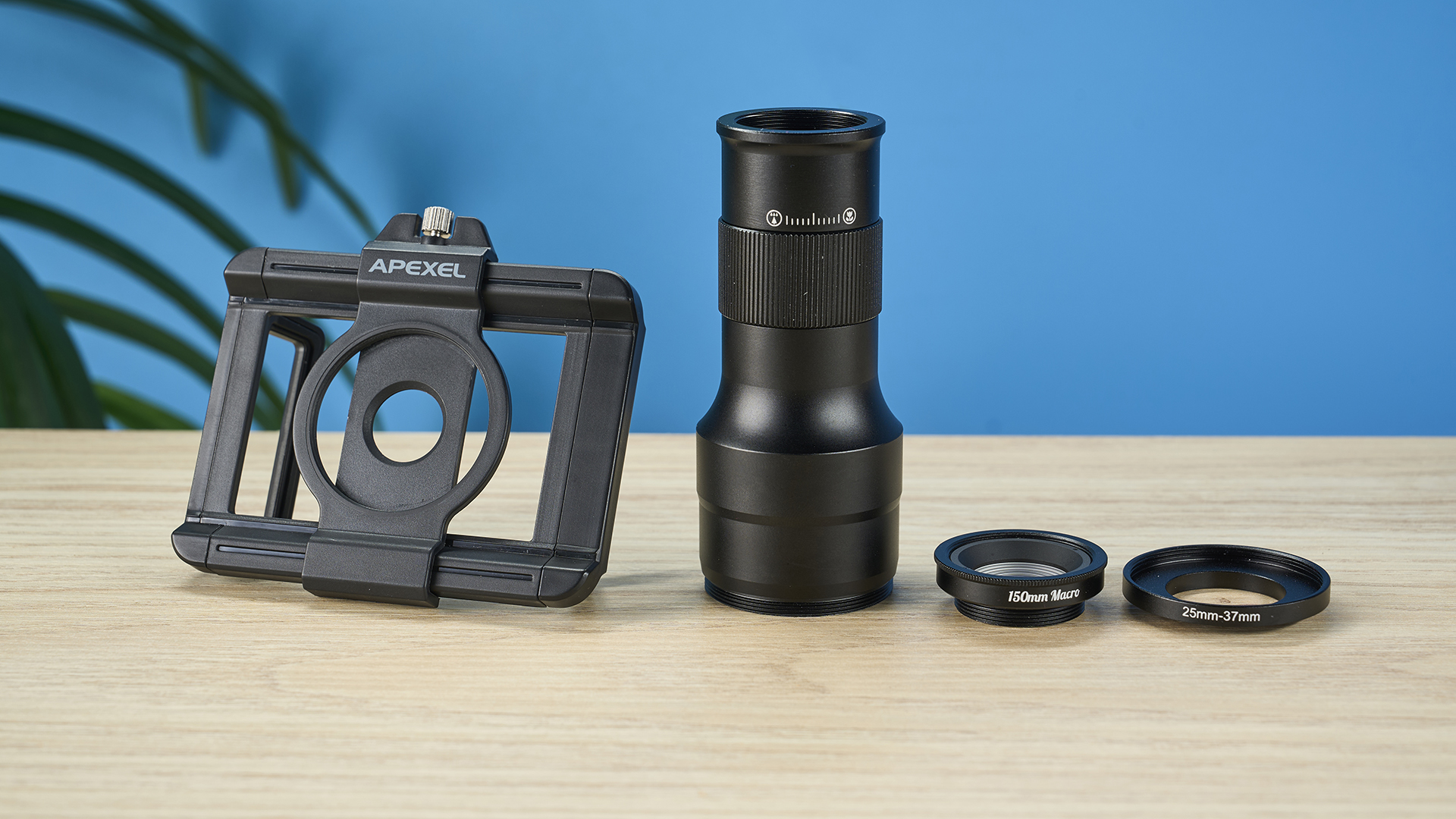
A 25-37mm adapter ring is also included in the box, and it’s compatible with 37mm filters. You also get a handy carry pouch, cleaning cloth, and lens caps in the box.
It’s important to note that the mount is bulky though, weighing 4.7 ounces, and nowhere near as minimalistic as the clip-on mount used by Sandmarc lenses. The bulkiness contributed towards me not being able to keep a subject in focus. However, I comfortably carried the lens attached to the mount in my winter coat’s pocket without any issues.
Apexel TM6 TeleMacro lens review: Tele lens performance


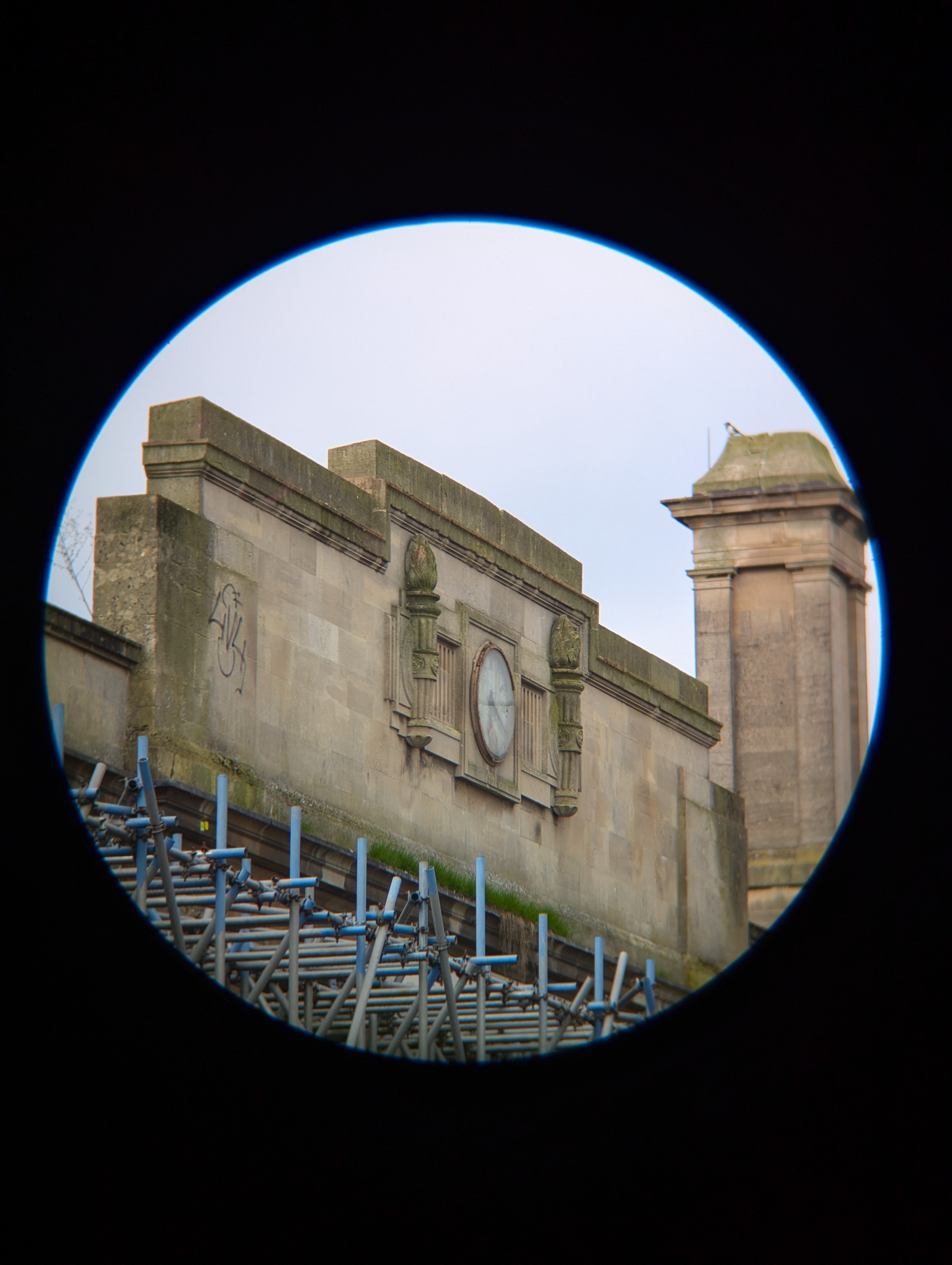
One very important thing to note is that the Apexel TM6 TeleMacro lens adds an opaque vignette effect to photos shot at 1x zoom, as you can see above — like you’re looking through binoculars. This is because the lens doesn’t sit directly on top of the built-in lens so there’s a gap — you won’t have this issue using Moment or Sandmarc lenses, especially using their case mount systems. I got over the vignette by shooting at 2x zoom, and the resulting images taken with the telephoto lens were great.


The first image above was taken with my Google Pixel 7 Pro’s telephoto lens (zoomed to match the framing) while the second photo was taken with the TM6 TeleMacro lens. I much prefer the second image as it adds a nice bokeh — the background is blurred just enough to draw attention to the statue. The colors also appear more true to life as that’s exactly what I saw with the naked eye. However, there is significant color fringing, also known as chromatic aberration, a color distortion that creates an outline of unwanted color along the edges of objects. You can see a tinge of blue at the top of the statue’s head in the second photo.


Speaking of colors, they appear more true to life in the second photo above as well (especially the red leaves and the blue sky), which was taken with the TM6 TeleMacro lens. The green leaves in the background are blurred nicely too. However, the first image — taken with the Pixel’s telephoto lens — appears sharper, as you can make out the individual shapes of the autumnal leaves. This is also partly because of the bulkiness of the lens. Holding it steady while turning the focus ring and then pressing the shutter button turned out to be quite the task, resulting in blur from camera shake.
There’s some color fringing in the second photo, again, and you can see it on some of the leaves.


The TM6 TeleMacro lens is great for portrait photography, too. The first photo above was taken with the Pixel 7 Pro’s portrait mode, and the second was taken with the lens attached and in portrait mode. The difference is night and day. The first is heavily pixelated while the second is smooth and you can even pick out the duck’s individual feathers. In the second photo, you can see very little color fringing on top of the duck’s head — but nowhere near as much as the photos I previously talked about.


Portrait-style photos taken without the Pixel 7 Pro’s portrait mode toggled also pale in comparison to the photos taken by TM6 TeleMacro lens, as you can see above. The first was shot with the Pixel’s primary lens, slightly zoomed in to match the framing of the second photo taken with the TM6 TeleMacro lens attached. Again, the background is just out of focus to highlight the duck in the second photo.
Apexel TM6 TeleMacro lens review: Macro lens performance
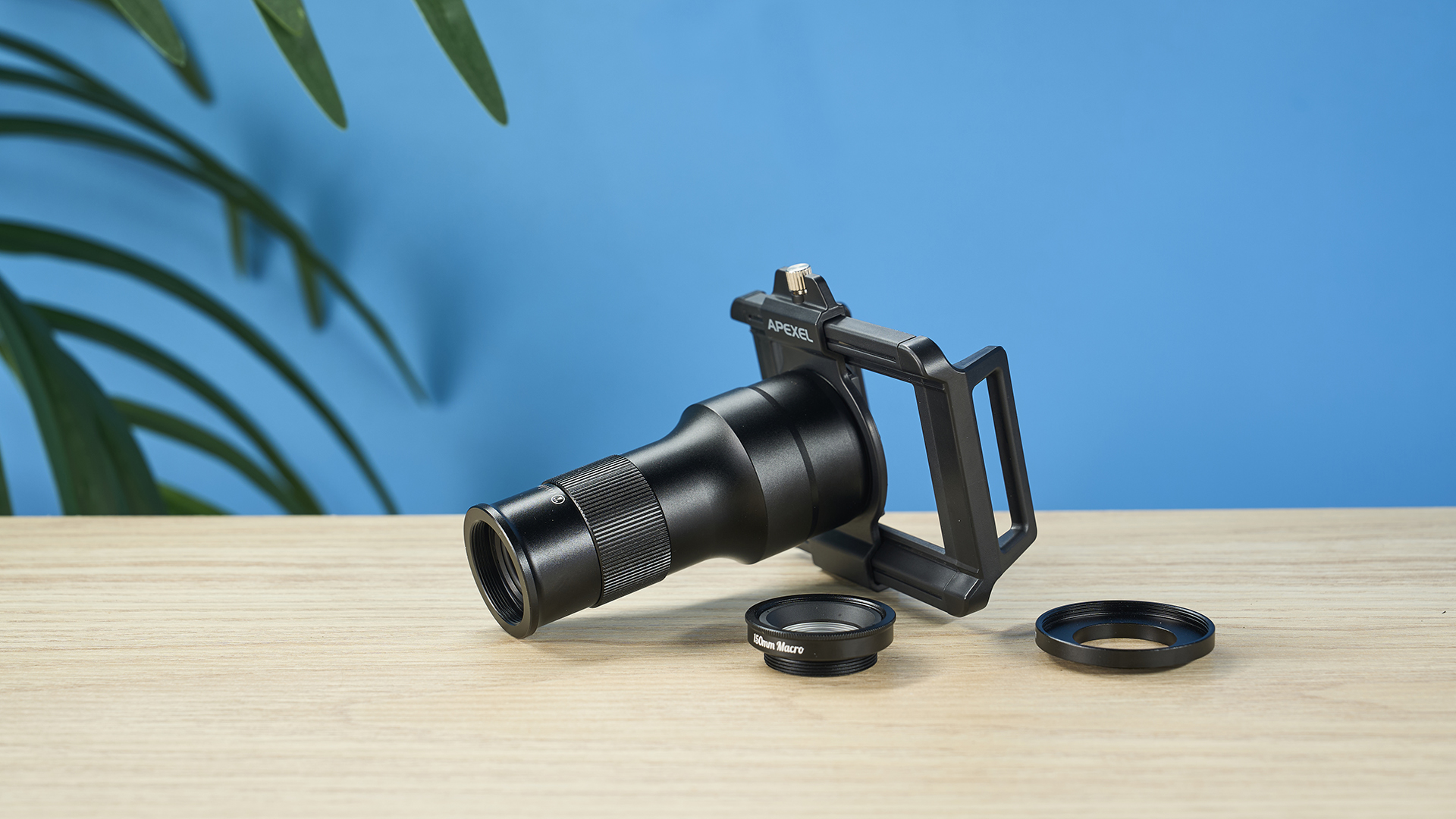
To take macro shots with the Apexel TM6 TeleMacro lens, you’ll need to screw on the included 150mm macro lens attachment. The macro performance is hit-or-miss. As I said before, its heavy weight makes it difficult to keep it still, and it’s even worse when you’re trying to shoot a macro subject — I even struggle with holding just my Google Pixel 7 Pro still when I’m shooting in macro mode. If your phone, unlike mine, doesn’t have a dedicated macro lens, the TM6 TeleMacro could be a game changer.


That said, photos where you can keep the lens stable enough to capture a shot turn out detailed. The first photo above was taken with the Pixel 7 Pro’s macro lens while the second was taken with the TM6 TeleMacro. Both images are good but I prefer the one taken with the Apexel lens. The background is softer and smooth, and the fine details within the focal plane are highlighted by the tight blur. The photo taken with the Pixel 7 Pro holds its own too as you can see the leaf’s veins better, but the TM6 TeleMacro produces a nicer aesthetic thanks to an extremely thin depth of field.

The TM6 TeleMacro lens also does a great job of isolating a macro subject, and the photo of the dew on the grass above demonstrates this. I crouched and stayed as still as possible to achieve this, and I’m pleased with the result. The focus is on the dewdrop in the center of the frame. This lens is good at revealing hidden worlds in day-to-day objects.

The primary issue you’ll face when shooting with a macro lens — like the Moment Macro 10x and the Sandmarc 25mm — is that you need to be so close to your subject that all light gets blocked out, and you’ll unintentionally cast a shadow on it. This is why macro lenses used by professionals have a longer focal length, such as 100mm. The TM6 TeleMacro is perfect as you can keep your distance from the subject but still capture the detail you want to. The photo of the leaf above was taken on an overcast day but there’s still plenty of light in the image.
Overall, the macro lens works really well when you get it right, but it wasn’t worth including most of the other shots I took as they didn’t turn out great.
Apexel TM6 TeleMacro lens review: Verdict
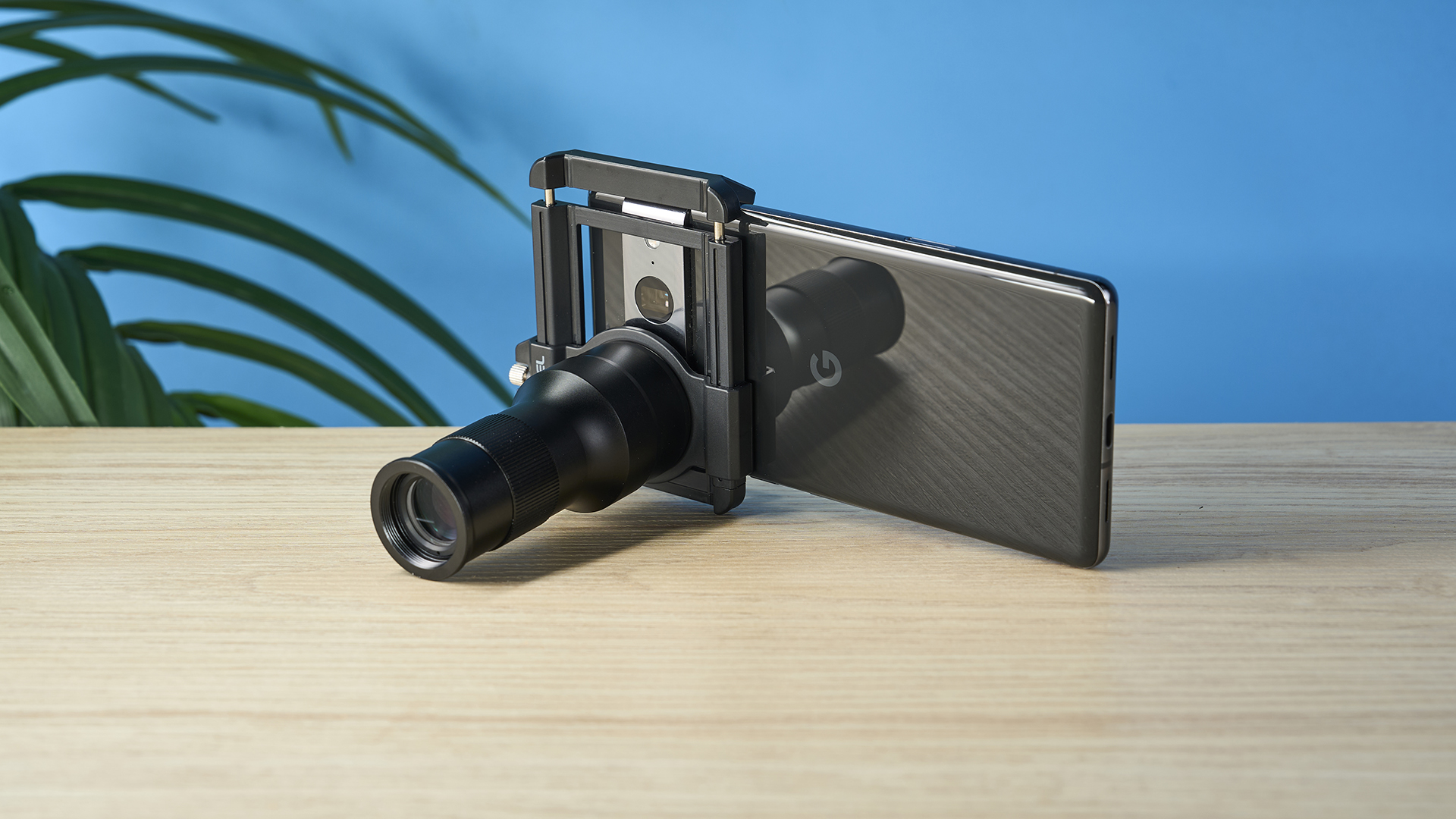
I’ve loved using and reviewing the Apexel TM6 TeleMacro lens as its telephoto performance one-ups that of my Google Pixel 7 Pro. The photos turned out lovely and detailed with smooth backgrounds. The lens is built really well too, with an aluminum alloy body that looks and feels premium. With a clip-on lens mount included, this lens can be used with most smartphones, making it more accessible. Compared to other brands, like Moment and Sandmarc, the lens is also inexpensive.
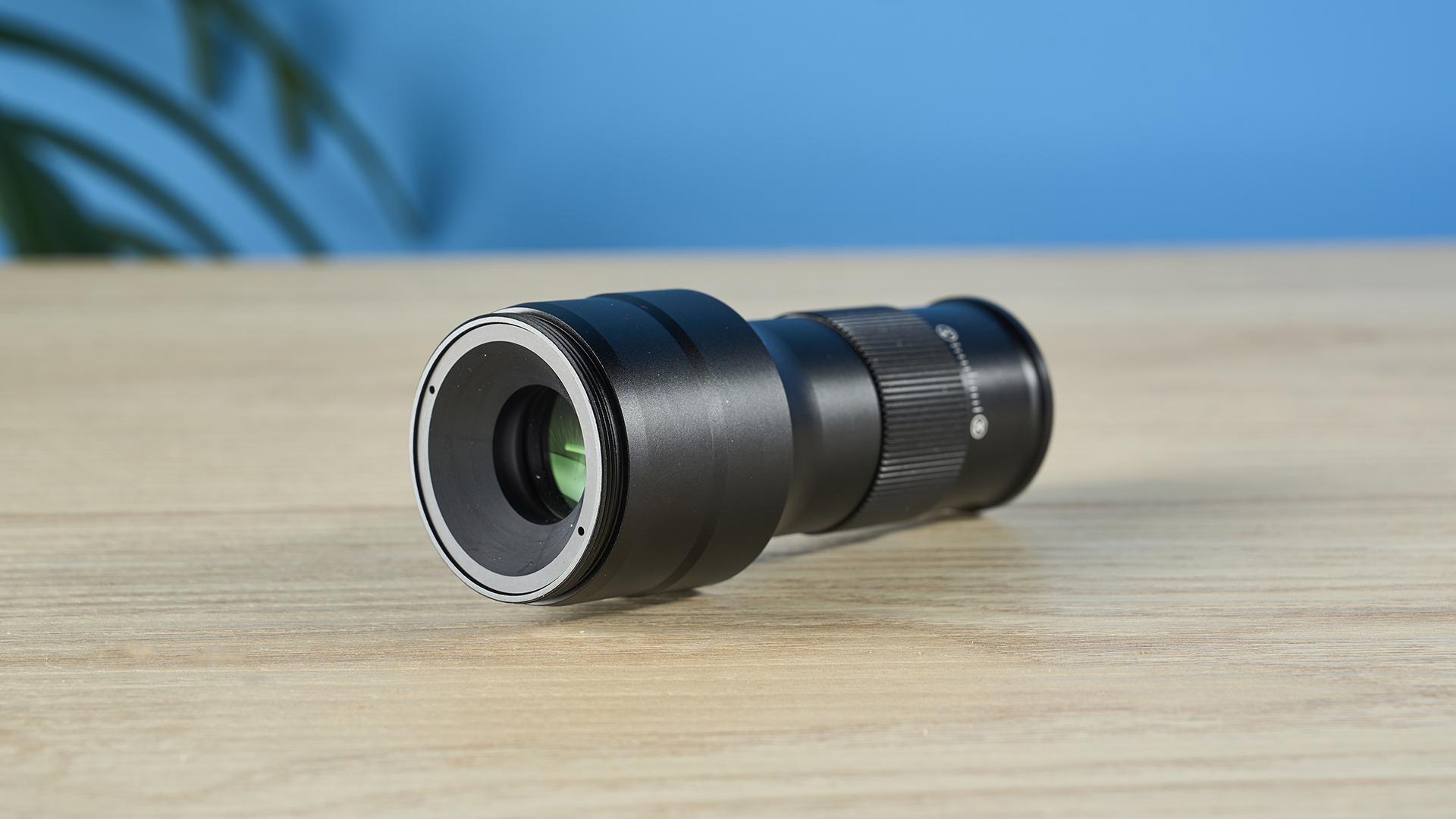
That said, the TM6 TeleMacro’s macro performance is hit-or-miss, as most of the photos I took didn’t turn out like I wanted them to. This is partly due to the lens’ bulky weight which makes it difficult to keep the lens still. But the photos I picked for this review turned out great and I was satisfied with them. Also, there’s significant chromatic aberration in some tele shots, which may be a turn off for some people.
Overall, Apexel’s offering is a decent yet inexpensive way to elevate your smartphone photography. It isn’t the same as buying one of the best cameras, but it’s still easy to recommend.

Nikita is a Staff Writer on the Reviews team at Tom's Guide. She's a lifelong gaming and photography enthusiast, always on the lookout for the latest tech. Having worked as a Sub Editor and Writer for Canon EMEA, she has interviewed photographers from all over the world and working in different genres. When she’s not working, Nikita can usually be found sinking hours into RPGs on her PS5, flying a drone (she's a licensed drone pilot), at a concert, or watching F1. Her work has appeared in several publications including Motor Sport Magazine, NME, Marriott Bonvoy, The Independent, and Metro.
